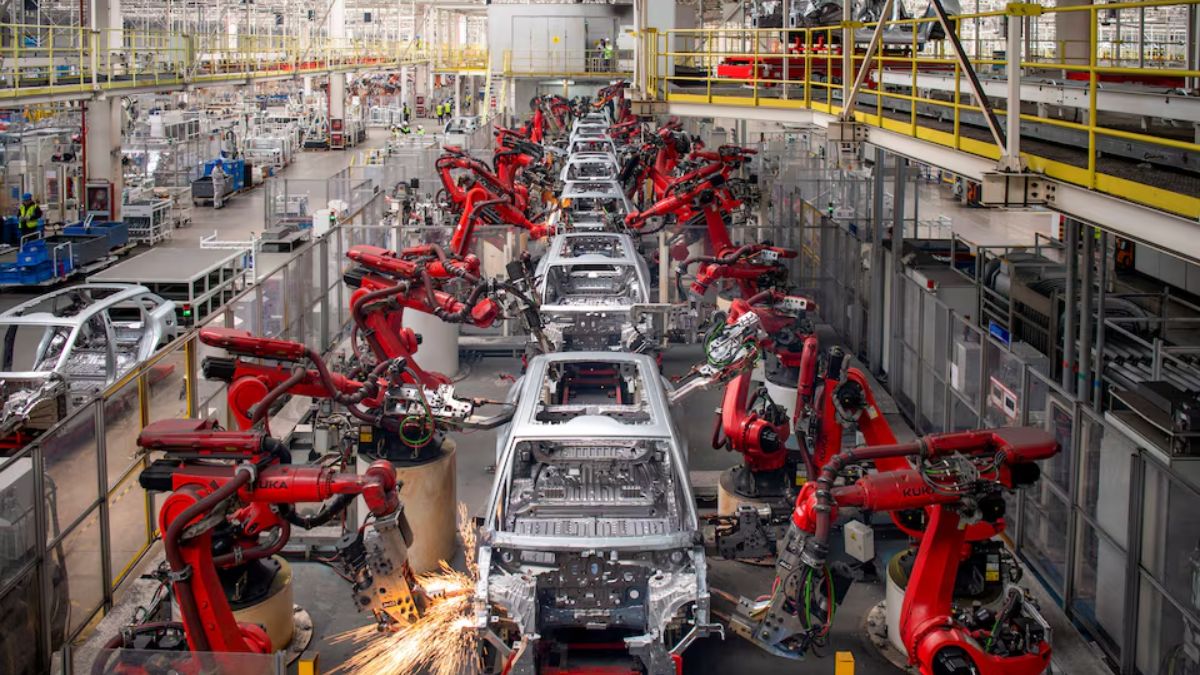China’s factory output and retail sales reported their weakest growth since last year in August, keeping pressure on Beijing to roll out more stimulus to fend off a sharp slowdown in the world’s second-largest economy.
The disappointing data split economists over whether policymakers would need more near-term fiscal support to hit their annual growth target of “around 5 per cent”, with manufacturers awaiting more clarity on a US trade deal and domestic demand curbed by a wobbly job market and property crisis.
Industrial output grew 5.2 per cent year-on-year, National Bureau of Statistics data showed on Monday, the lowest reading since August 2024 and weaker than a 5.7 per cent rise in July. It also missed forecasts for a 5.7 per cent increase in a Reuters poll.
Retail sales, a gauge of consumption, expanded 3.4 per cent in August, the slowest pace since November 2024, and cooling from a 3.7 per cent rise in the previous month. They missed a forecast gain of 3.9 per cent.
“The strong start to the year still keeps this year’s growth targets within reach, but similar to where we were at this time last year, further stimulus support could be needed to ensure a strong finish to the year,” said Lynn Song, chief economist, Greater China at ING.
“While it is too early to gauge the impact of the consumer loan subsidies coming into effect in September, it is likely that more policy support is still needed, given the broader slowdown across the board. We continue to see a high possibility for another 10bp rate cut and 50bp RRR cut in the coming weeks.”
Fixed-asset investment also grew at a slower-than-expected 0.5 per cent pace in the first eight months year-on-year, from 1.6 per cent in January-to-July, marking its worst performance outside the pandemic.
Authorities are leaning on manufacturers to find new markets to offset US President Donald Trump’s unpredictable trade policy and weak consumer spending.
Separate data this month showed factory owners have had some success diverting US-bound shipments to Southeast Asia, Africa and Latin America, but the drag from the property crisis continues to offset efforts to steady the economy.
Zhaopeng Xing, senior China strategist at ANZ, said that while the data showed momentum in the world’s second-largest economy was weakening, it was not yet bad enough to trigger a new round of stimulus.
“Policies and measures to support service consumption are expected to offset the impact of aggregate demand this month,” he said, adding an official crackdown on firms aggressively cutting prices made domestic demand appear worse than it was.
Household pressure
Chinese households, which have seen their wealth shrink in the real estate downturn, have tightened their purse strings as business confidence falters, dampening the jobs market.
Unemployment edged up to a six-month high of 5.3 per cent in August, from 5.2 per cent a month prior and 5.0 per cent in June.
Meanwhile, new home prices fell 0.3 per cent last month from July and 2.5 per cent on an annual basis, a different NBS dataset showed.
“We had expected that retail sales growth would have stayed above 4 per cent before September under consumer subsidies, so what happened these months was a disappointment,” said Xu Tianchen, senior economist at the Economist Intelligence Unit.
Xu said that China’s main economic indicators could worsen over the fourth quarter due to base effects. Officials typically reach for further policy support towards the year end to ensure the economy hits the growth target.
“This will raise the likelihood of stimulus in the fourth quarter, including monetary easing, frontloading of debt issuance to this year, and possibly a fiscal expansion,” he added.
Zheng Shanjie, head of China’s state planner, said last week that Beijing would make full use of fiscal and monetary policies and improve its toolkit to achieve annual targets.
Weather has also not helped, with manufacturing activity affected by the hottest conditions since 1961 and the longest rainy season for the same period.
“But there are more fundamental headwinds too, including fading fiscal support and efforts to curtail overcapacity,” said Zichun Huang, China economist at Capital Economics.
“While the weak data may trigger some additional policy easing over the coming months, the likelihood is that this proves insufficient to turn things around,” she added.
(This is an agency copy. Except for the headline, the copy has not been edited by Firstpost staff.)
End of Article

)

)